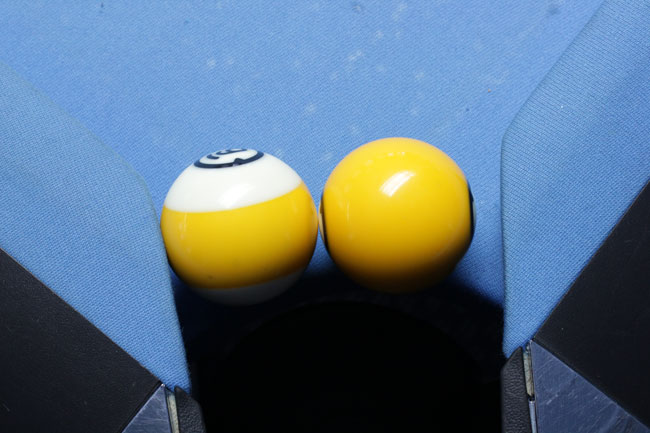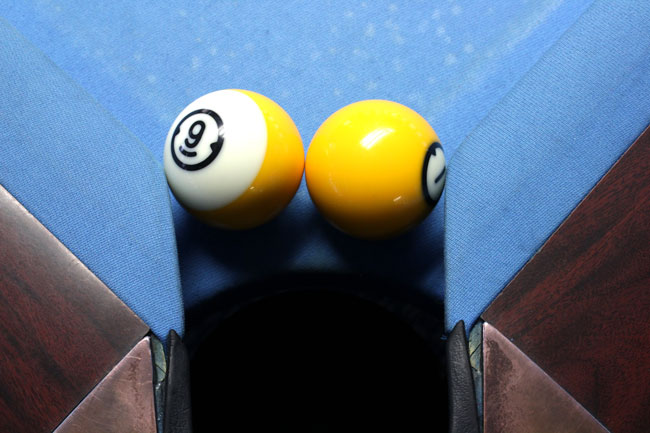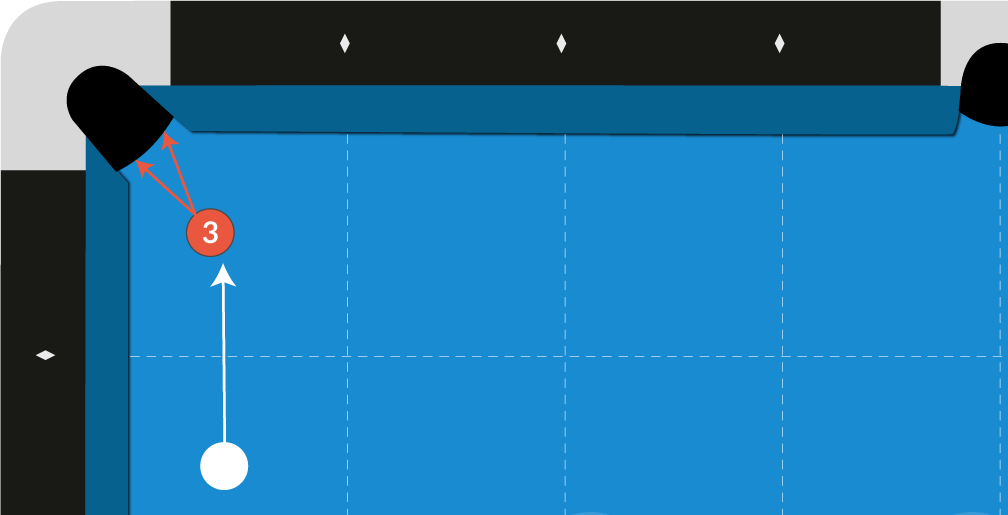Pool is a game full of nuances and small details. One of the details you may not have known about has to do with using all the space in the pocket. Pockets in most pool halls are wide enough to fit two balls through them at once. This means the pocket has a lot of empty space between the sides of the pockets and the object ball where you make your shots. You can use this space to your advantage and shoot to specific parts of the pocket to make getting position on your next shot easier. Even though it seems like a tiny change, using the entire pocket is a major part of American pool and makes shots that might otherwise have been impossible, possible.
A pocket on a standard pool table is 5 inches wide, on pro tables they are 4.5 inches wide, and a pool ball is 2 ¼ inches wide. This means that a pro cut pool table pocket is just as wide as two pool balls and a standard pool table has more than enough room to fit two object balls through it. Two ball widths of space might not sound like a lot, but it’s more than enough room to work with.
 Standard Size Pockets
Standard Size Pockets
 Professional Size Pockets
Professional Size Pockets
If you aim for a specific section of the pocket instead of the center of the pocket you drastically change the direction of the cue ball to get position. Pro’s carefully study balls left hanging in a pocket because they know the shot isn’t as easy as it looks to get position on the next ball. They need to calculate how much to cheat the pocket to make the ball and get shape at the same time.
You can use this extra space to make it easier to get position on your next shot. The way you do that is to aim for a specific part of a pocket. The easiest time to do this is when the object ball is close to the pocket. This will create more or less angle for the cue ball which is important if you need to slow the cue ball down or speed it up. If you’ve ever hit a shot and been surprised with where the cue ball ended up one reason that might have happened is because you accidentally cheated the pocket.

In some situations, you can use this technique to give yourself less angle when you want to play a stop shot to minimize the movement of the cue ball. In the example below, there is too much angle to hold the cue ball for position by playing a stop shot. But if we cheat the pocket and hit the object ball thicker, while using throw we can play the stop shot easily, making it much simpler to complete our run. Knowing when to cheat the pocket can take a situation from complex to extremely easy if you know when and how to do it.
